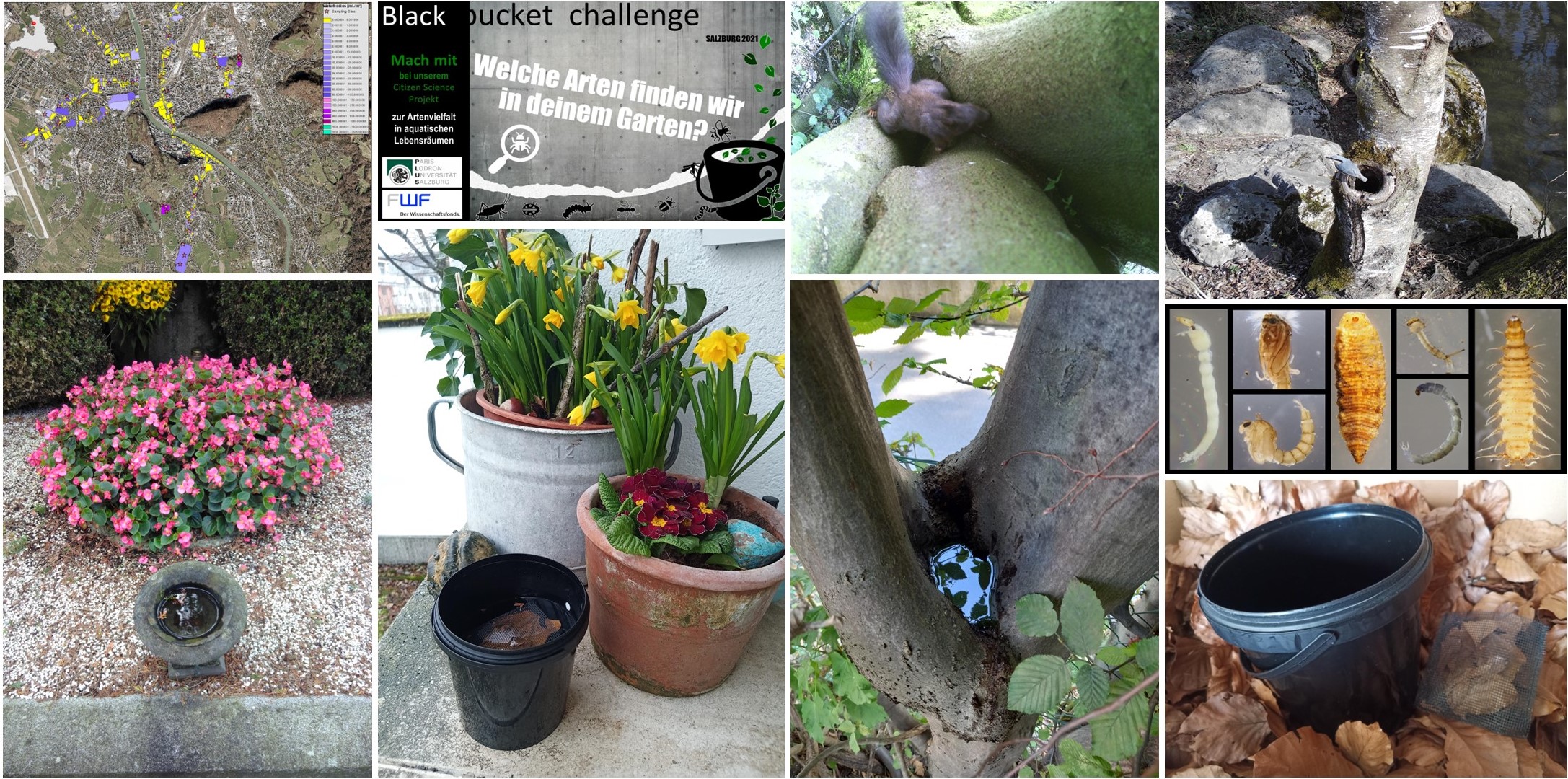Urban tree holes

Within the FWF-funded research project “Aquatic communities in urban microecosystems” we aim to shed light on certain aspects of urban aquatic microhabitats that have not been investigated so far. The main focus lies on urbanization and its possible effects on larval insect communities.
First, we generally investigate which types of containers harbor which species in an urban space and if the communities are structured by urbanity measures (imperviousness, human population density, etc.) due to altered environmental parameters (higher temperatures, etc.).
Another focus lies on stable isotope analyses (13C, 15N) of the insect larvae in different containers and if their trophic positions are related to urban metrics and may change with differences in resource quality/availability.
Further, a main question is, if and which terrestrial animals rely on urban standing waters. As a consequence of the use by terrestrials (bathing, drinking and potentially feeding on larvae by birds) insect larvae and the number of emerging insects might be affected somehow. To study this, we conducted a large project in the city of Salzburg using camera traps and self-built emergence traps. Measuring environmental and urbanization variables as well, we hope to reveal direct and indirect relationships between terrestrials, aquatic insect communities, emerged adults and urbanization using structuring equation modeling.
This project also aims to investigate if certain patterns between urban aquatic insects and increased urbanity are the same in other cities and if our results can be generalized. To answer this question, an international Citizen Science project was done, including the provision of artificial containers (imitating tree holes) in Salzburg (AUT), Vienna (AUT), Trient (IT), Zurich (CH) and Vancouver (CAN). These artificial containers were installed for three months in private gardens of the Citizen Scientists and could be colonized by insect larvae. Serving as ideal model-ecosystems, we can answer several questions with this data.
During this project we developed a pictorial identification key of aquatic insect larvae based on species and morphospecies with a focus on Diptera. We additionally prove species identification with DNA barcoding of the COX1 region. This identification work should act as a reference database and facilitate larval identification in related projects and build a basis to collaborate with researchers and institutes of similar research interest.
ORF short documentary on our urban microecosystems project.
Radio broadcast (Deutschlandfunk) on overlooked urban habitats (in German).
Black Bucket Challenge




